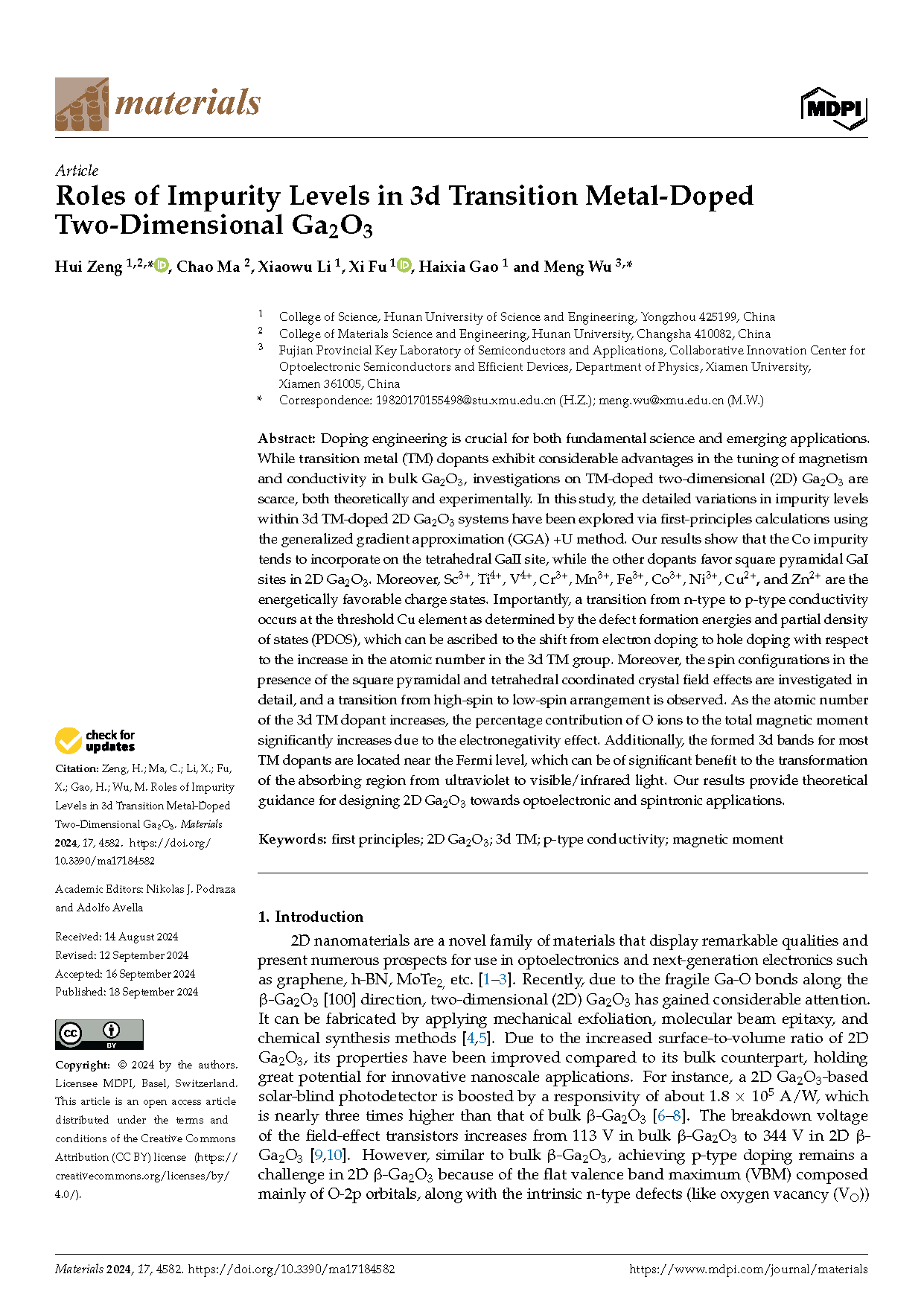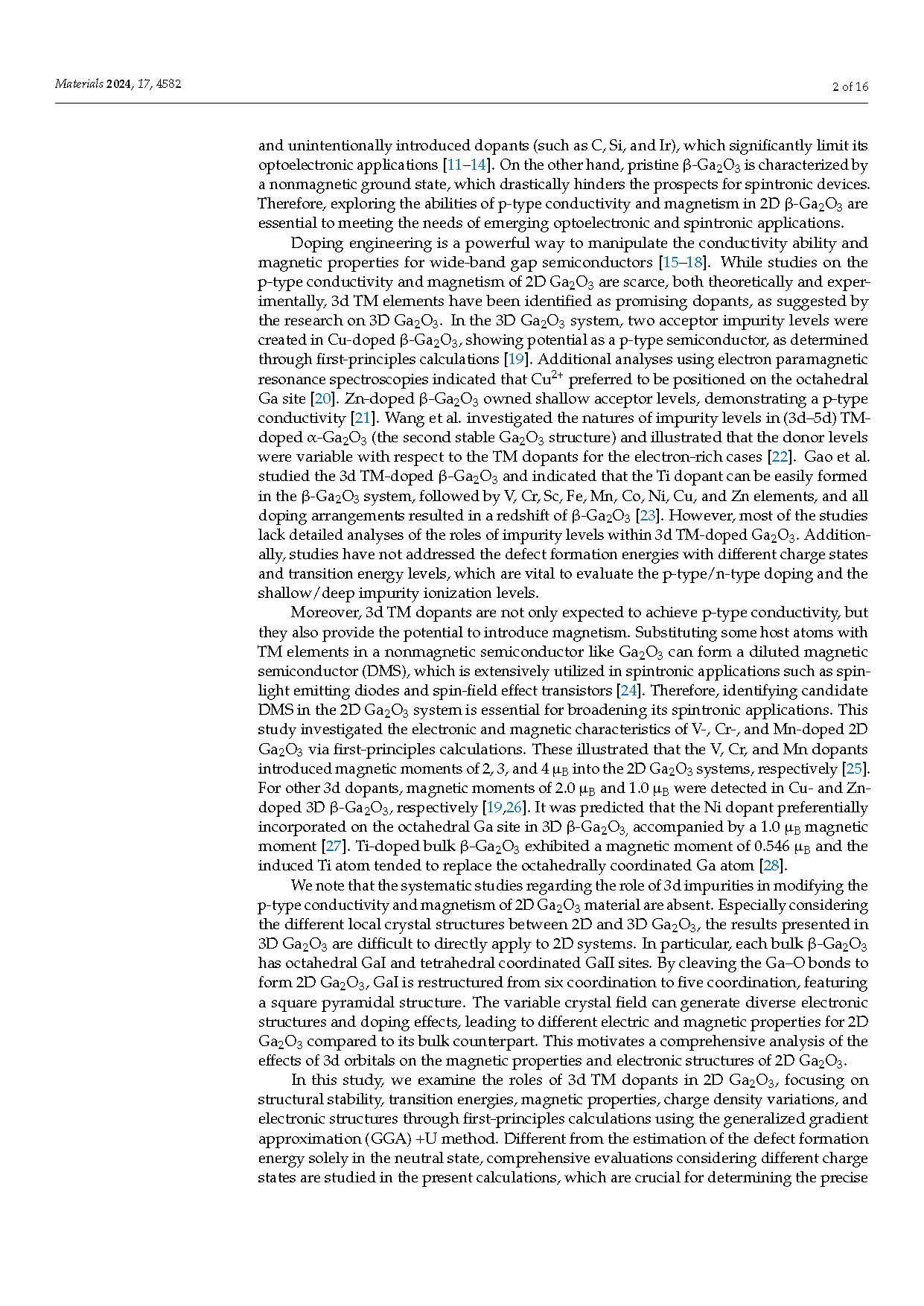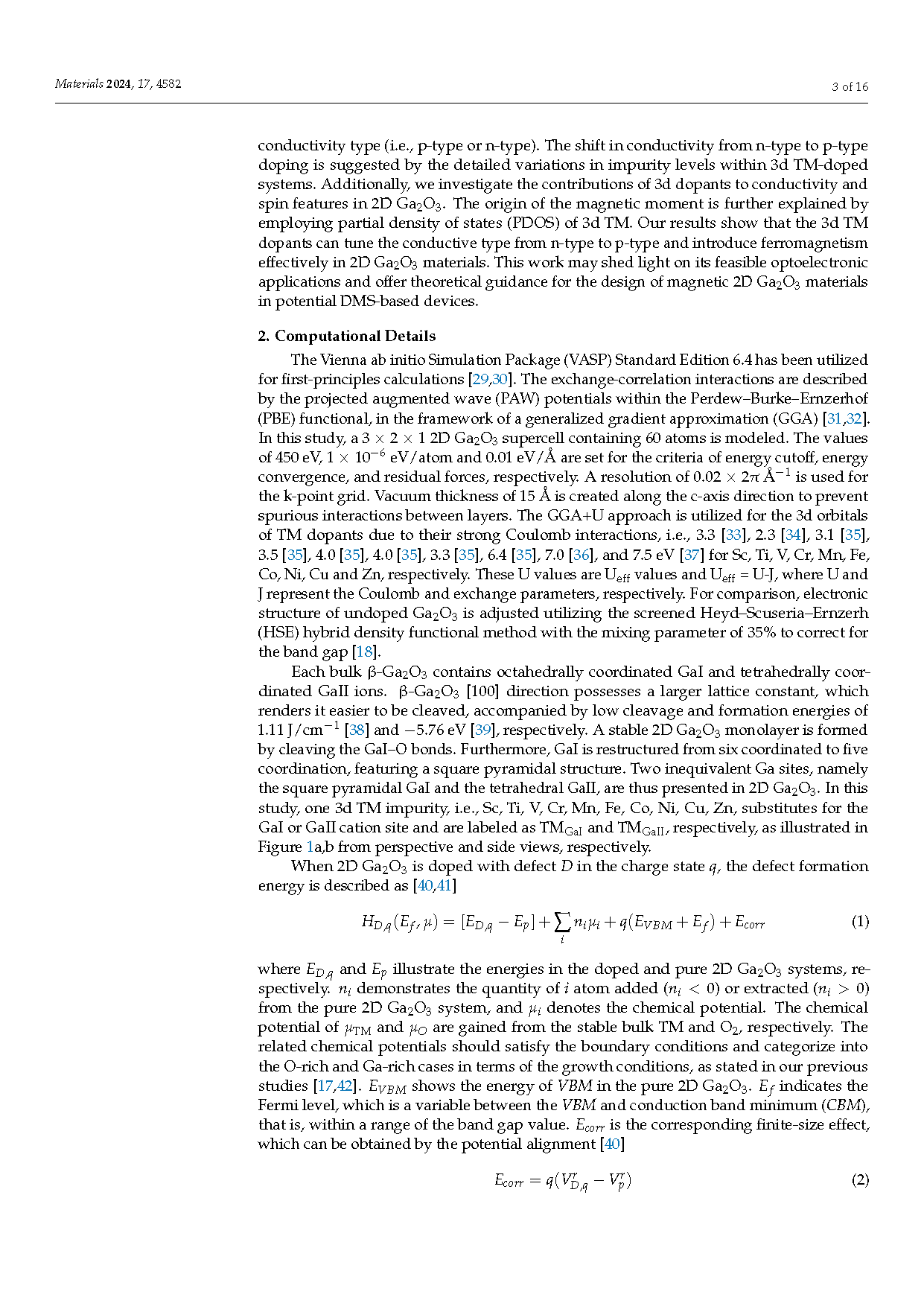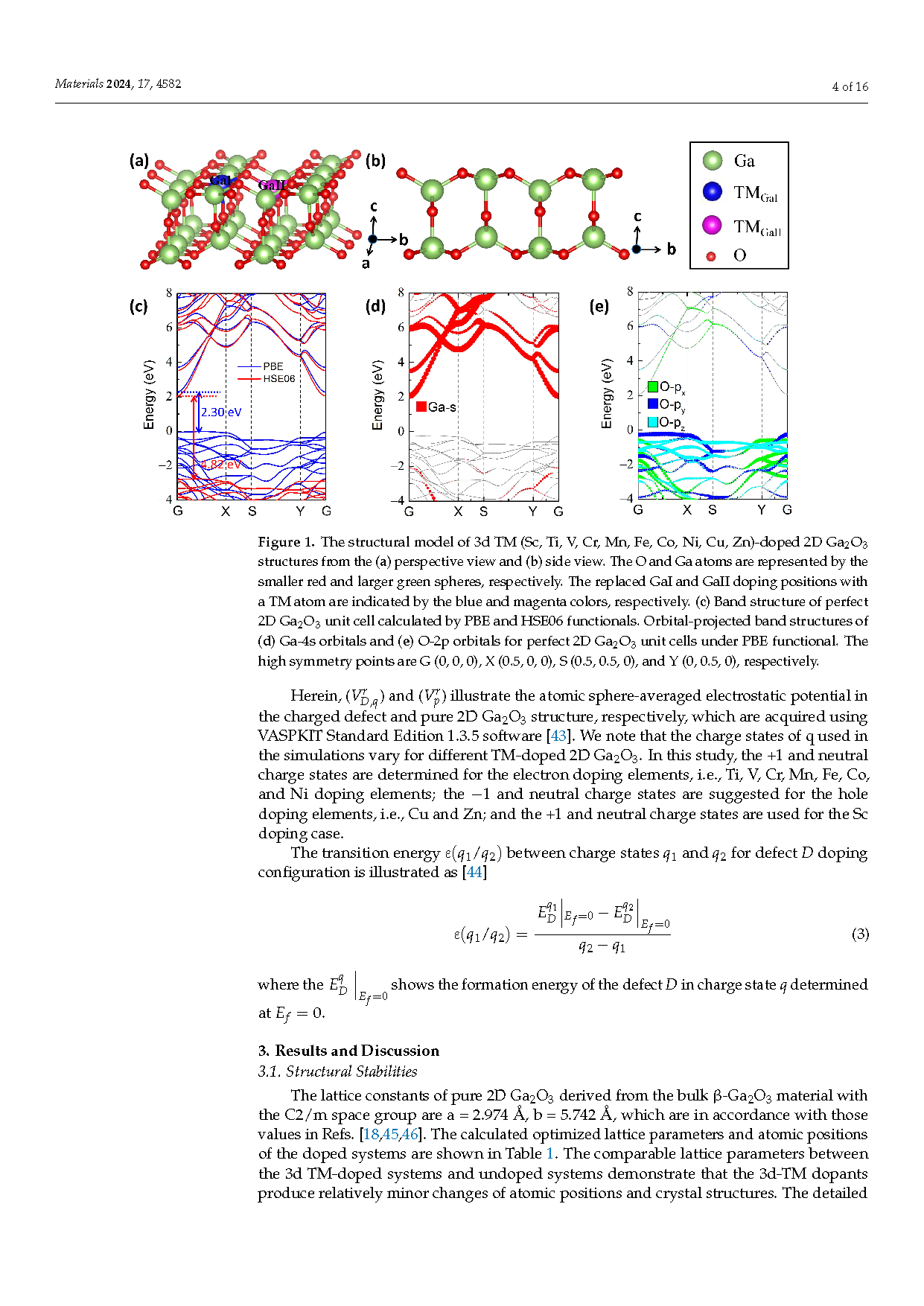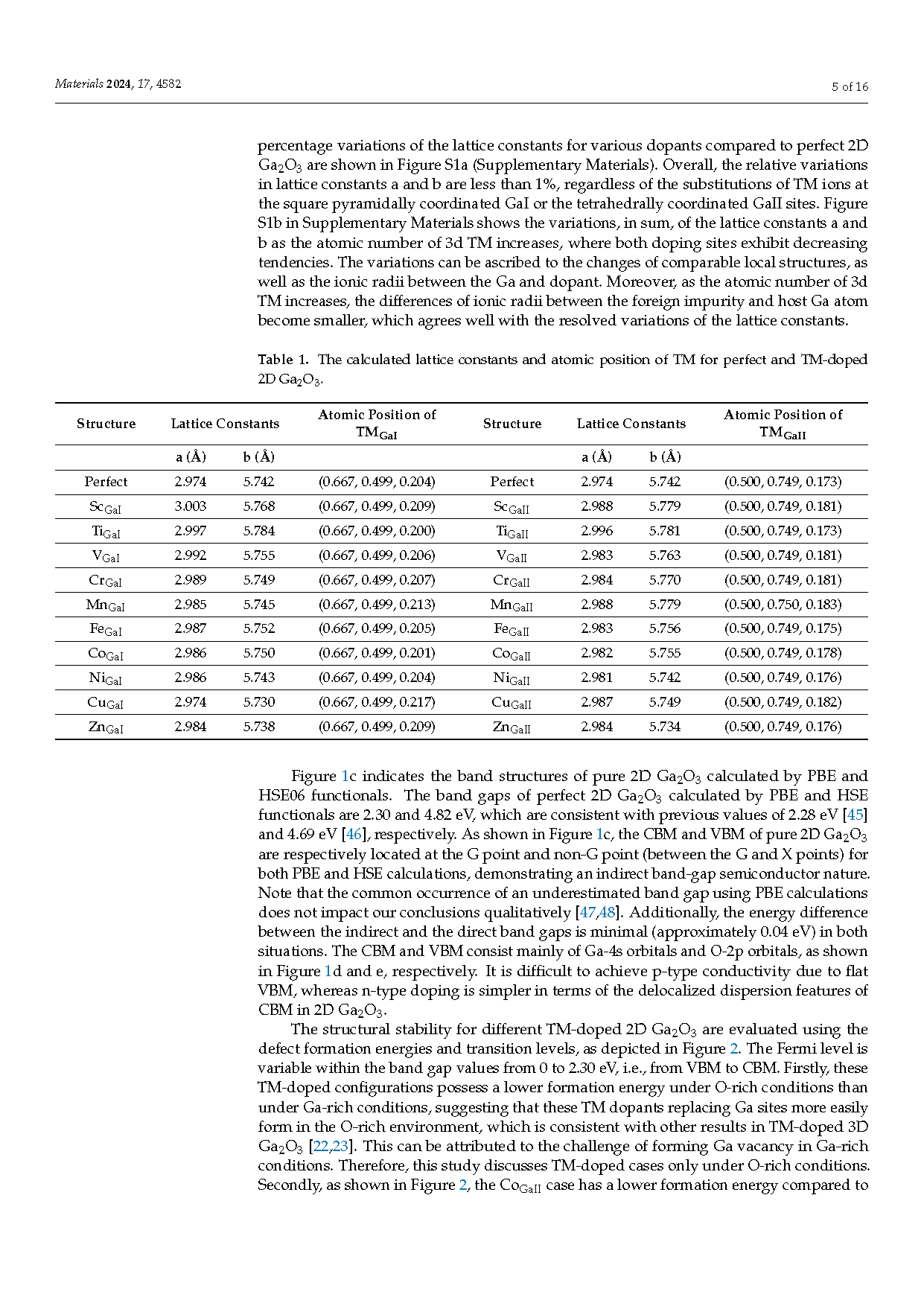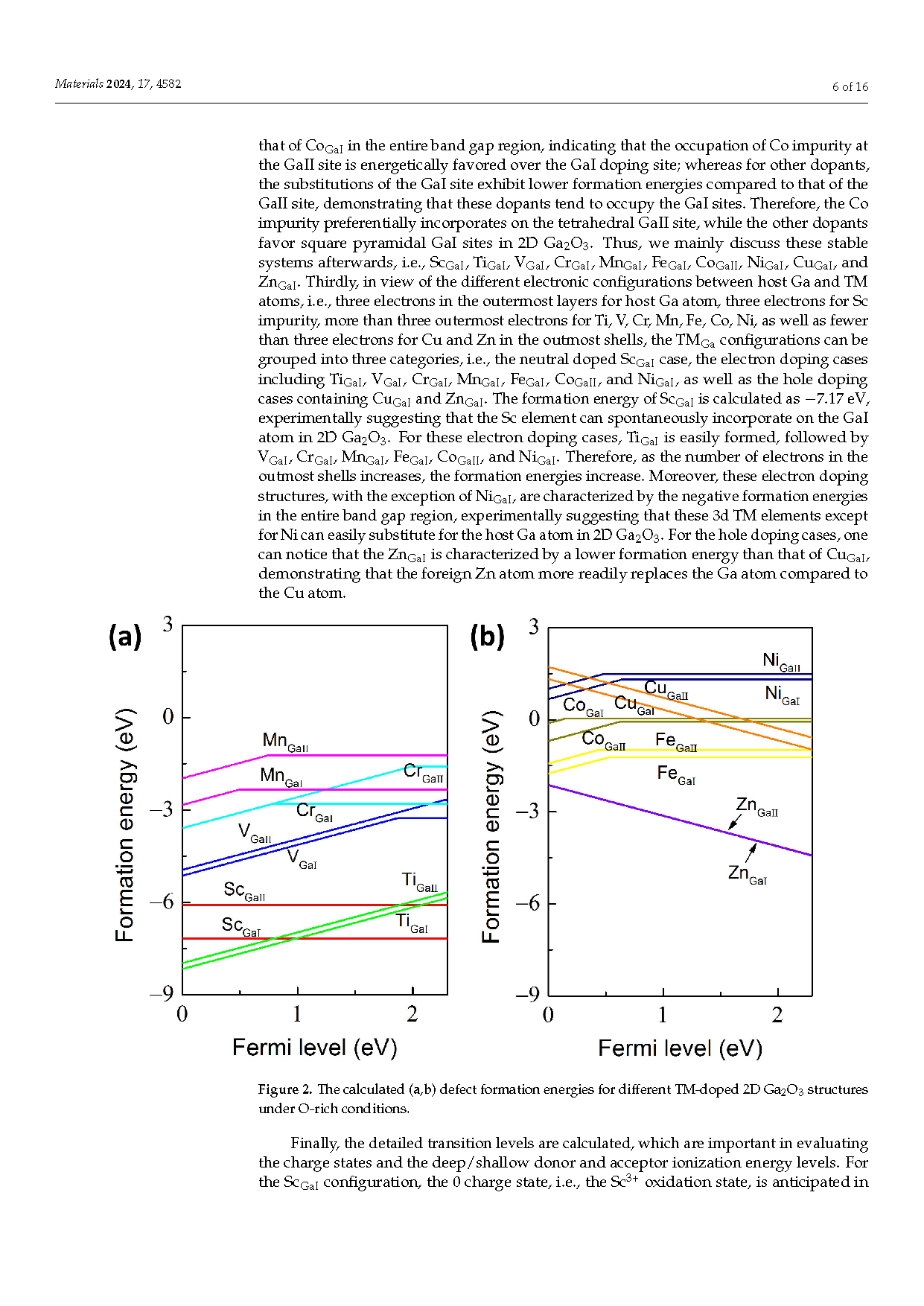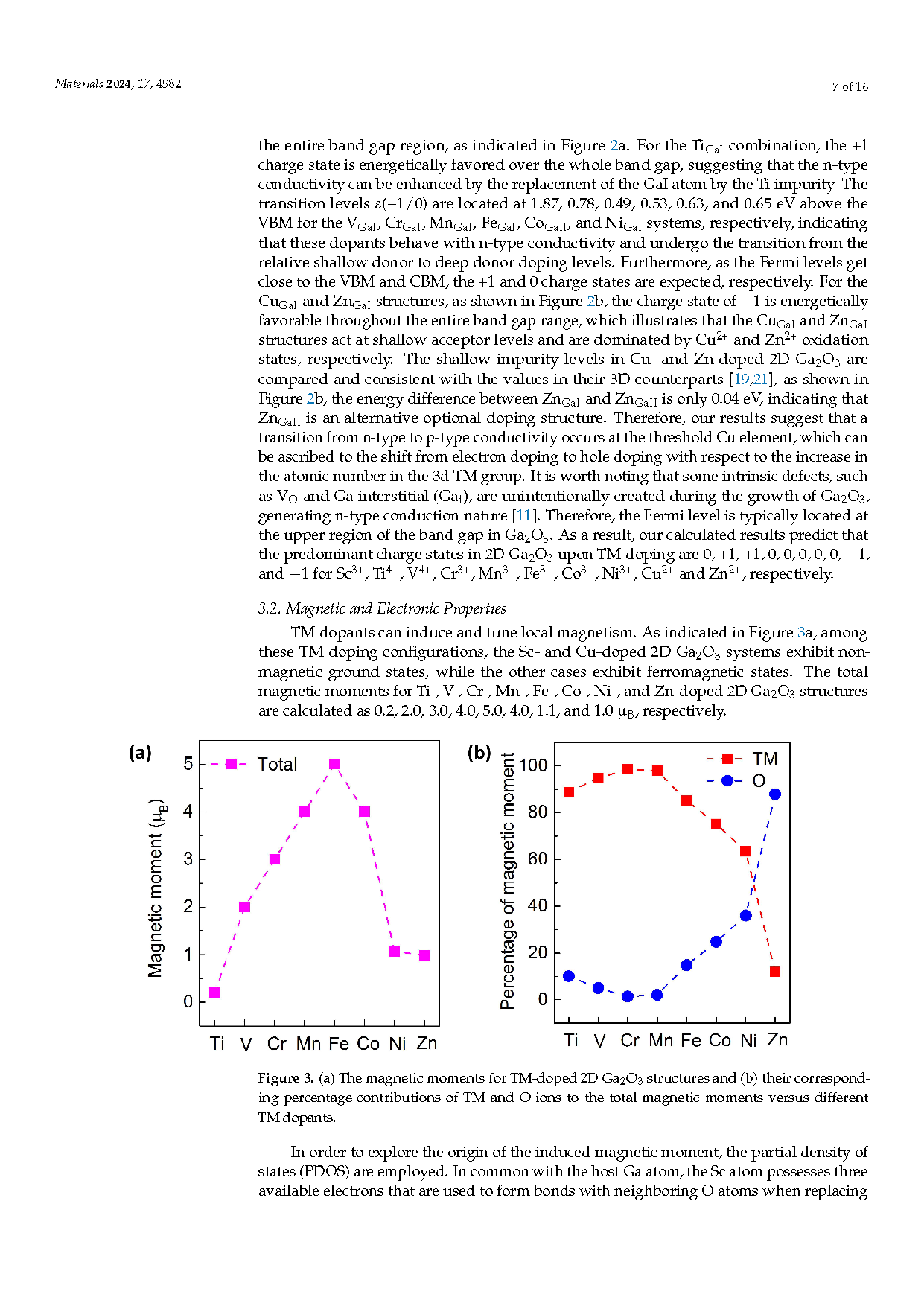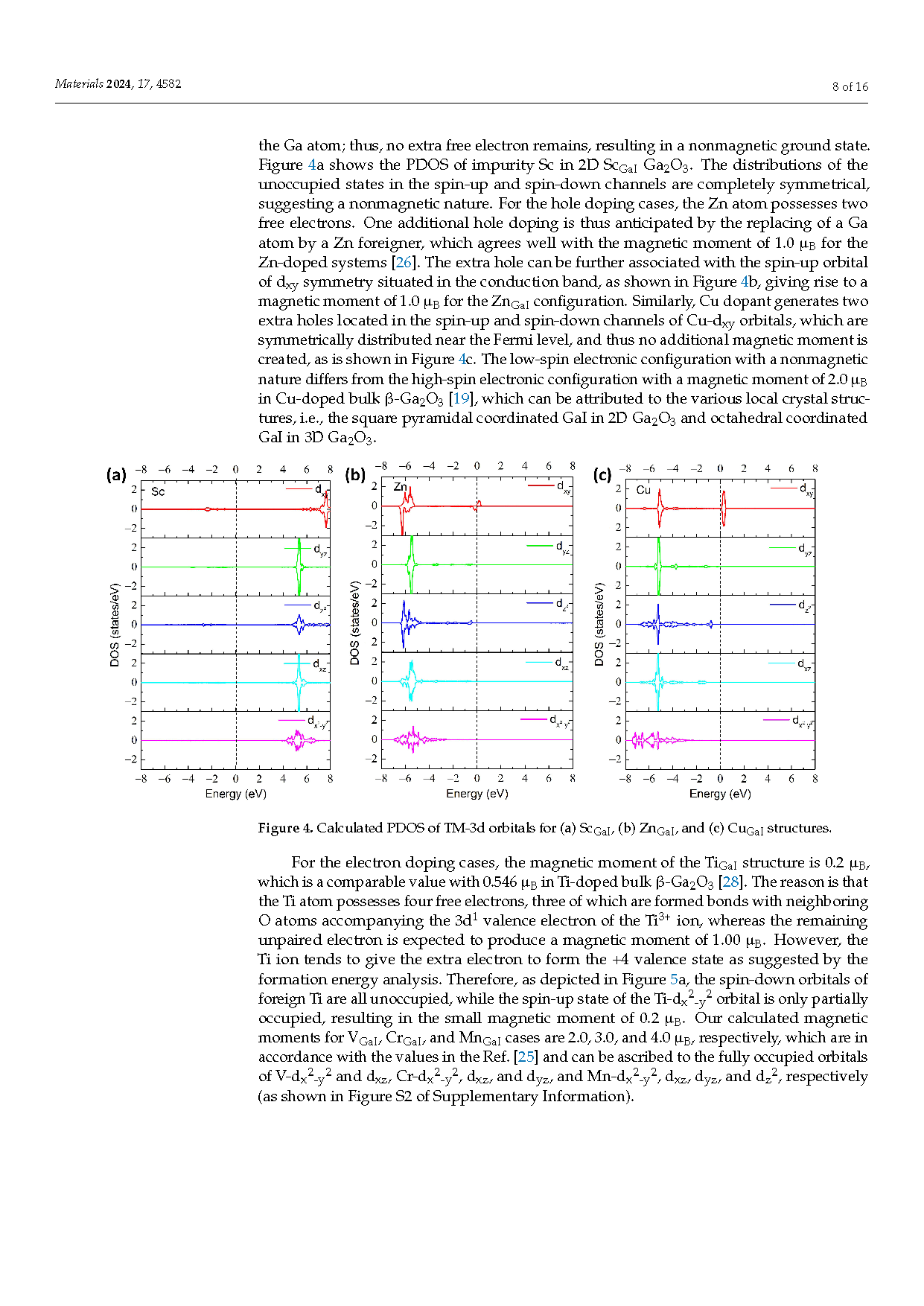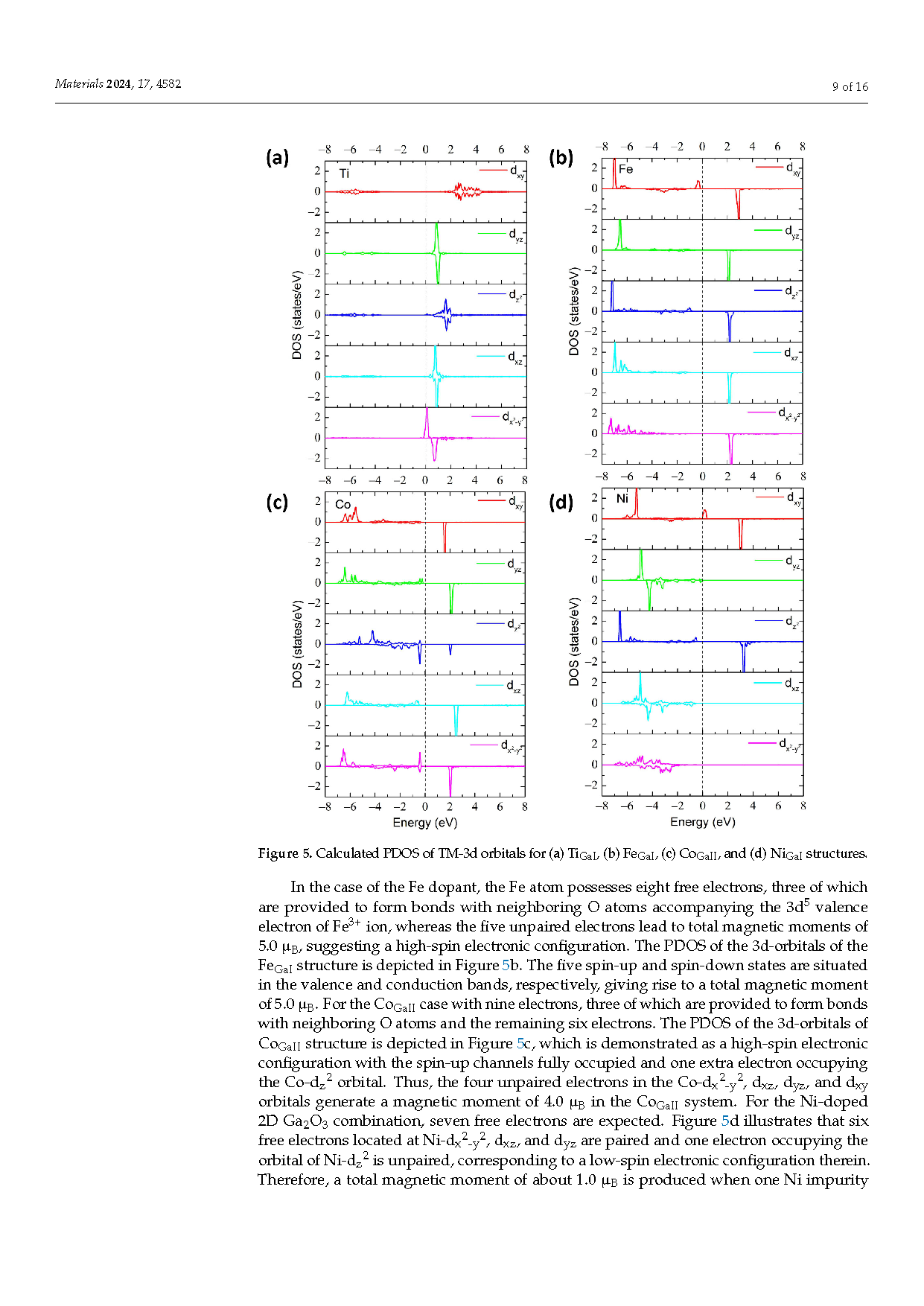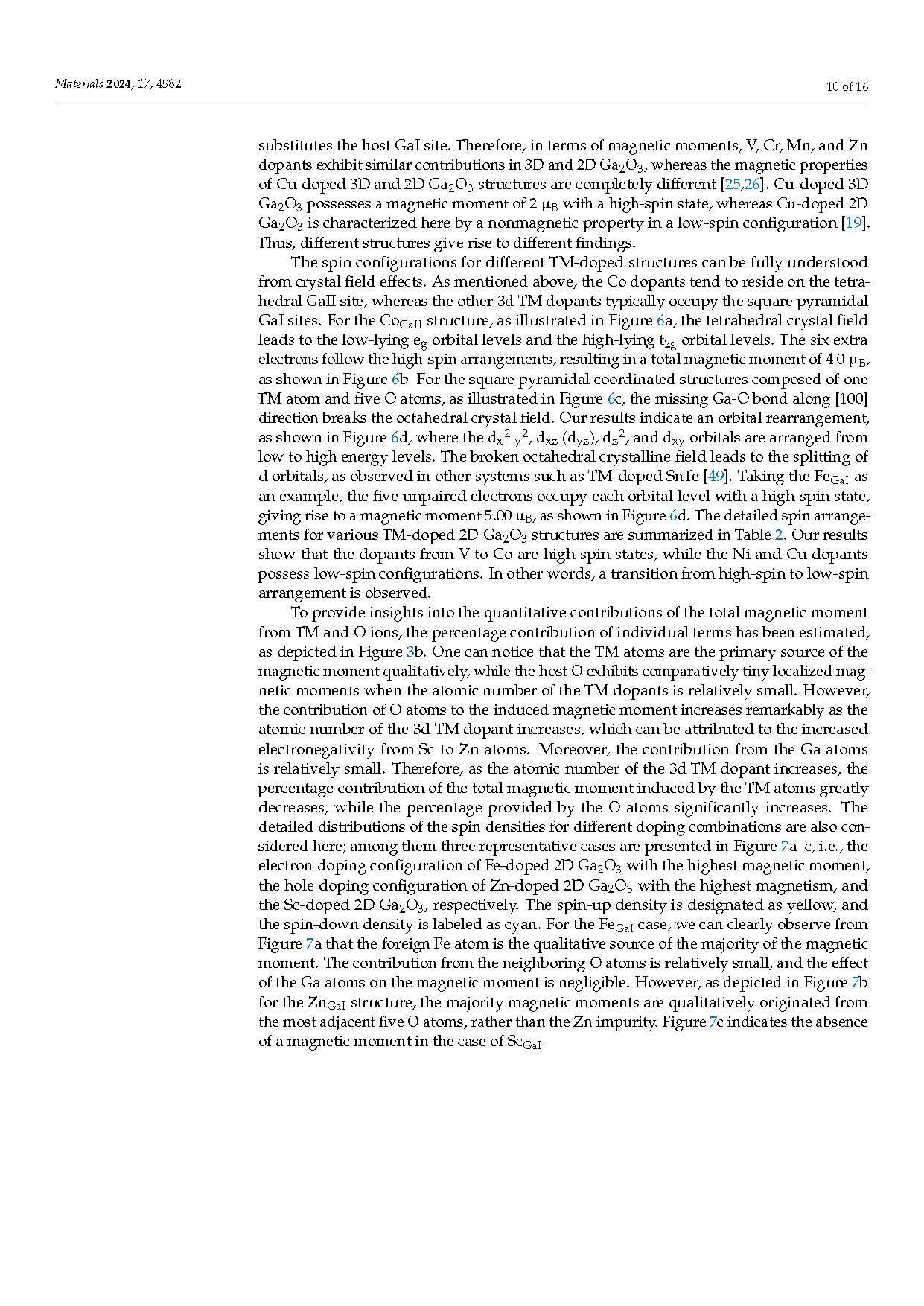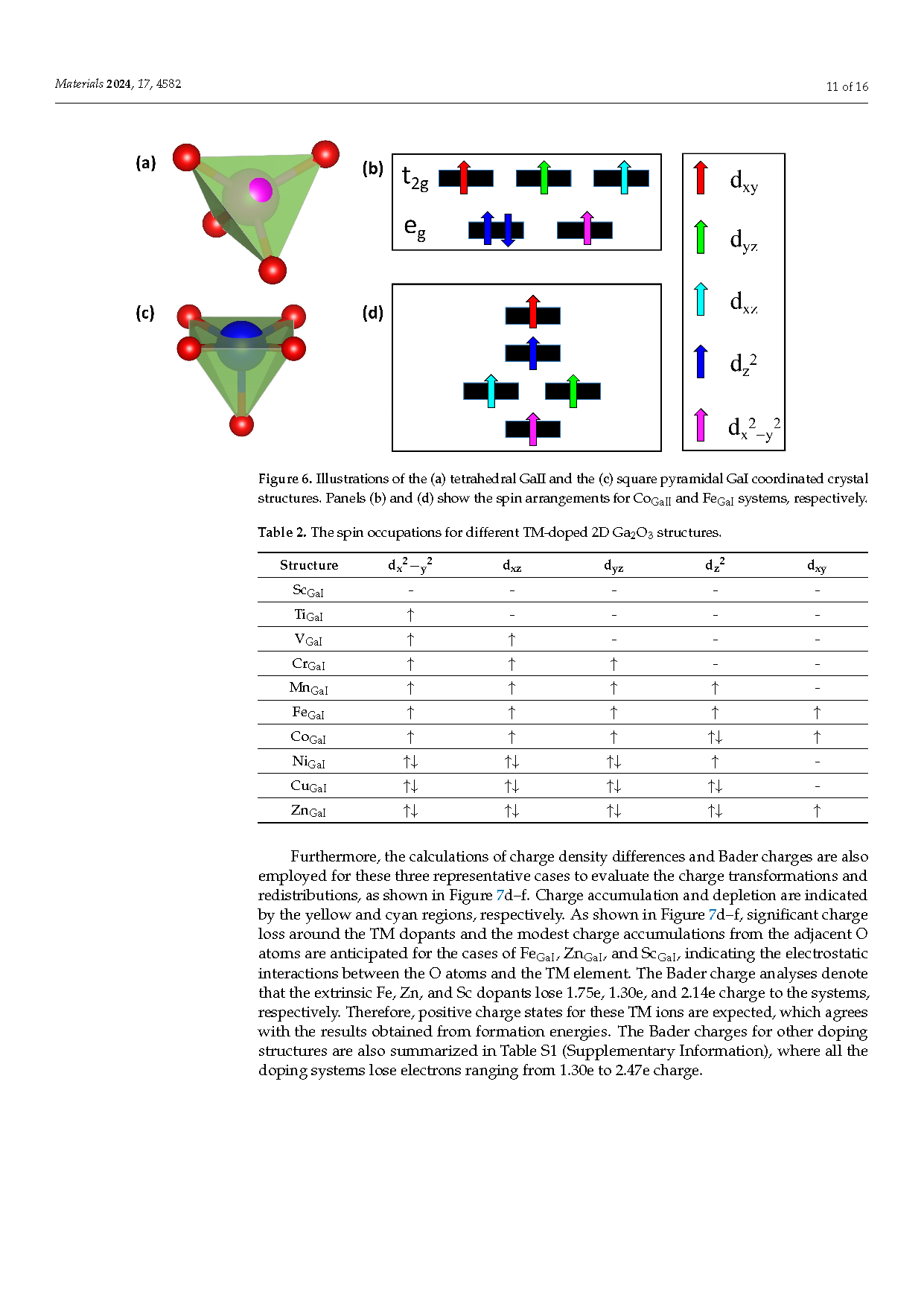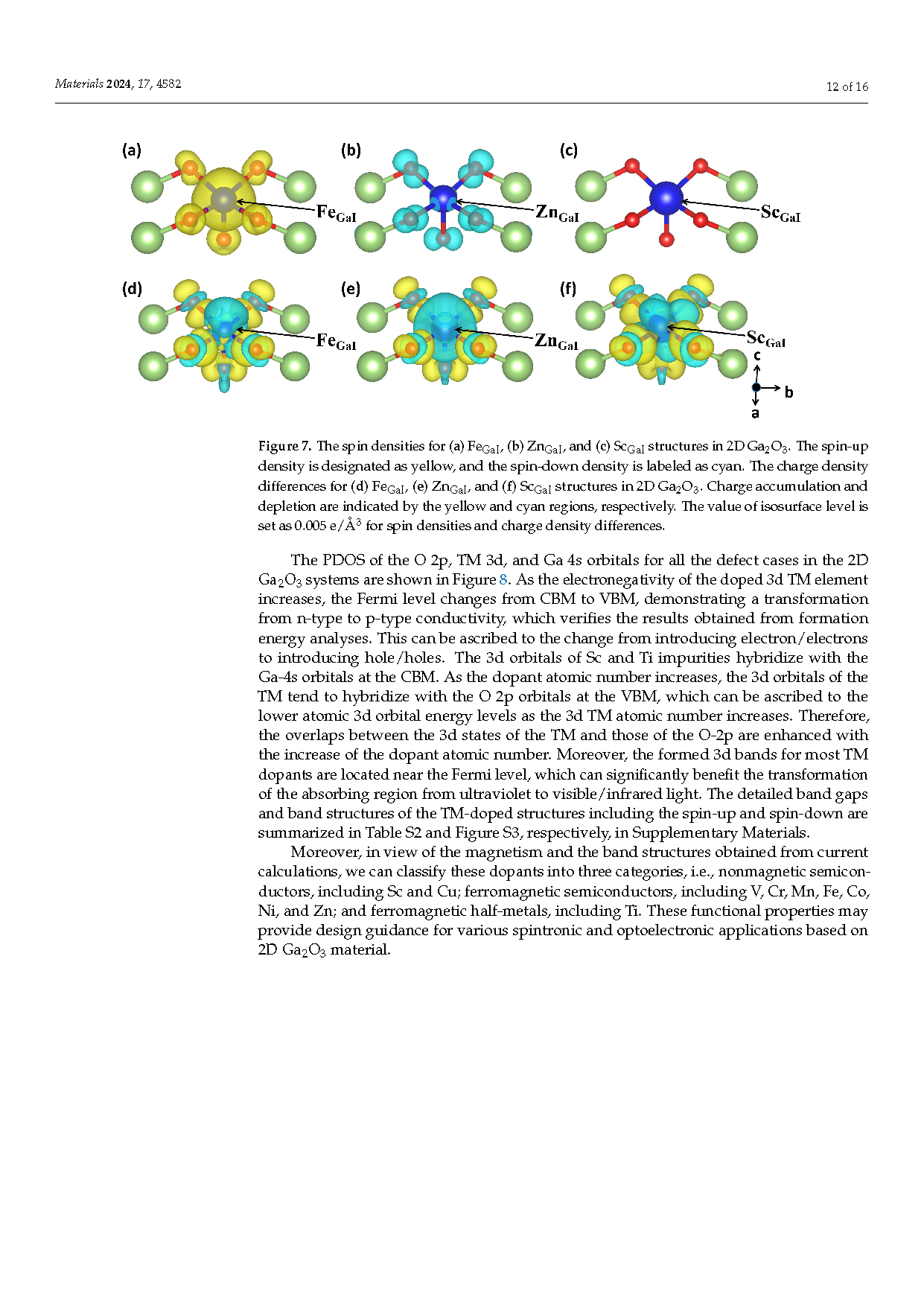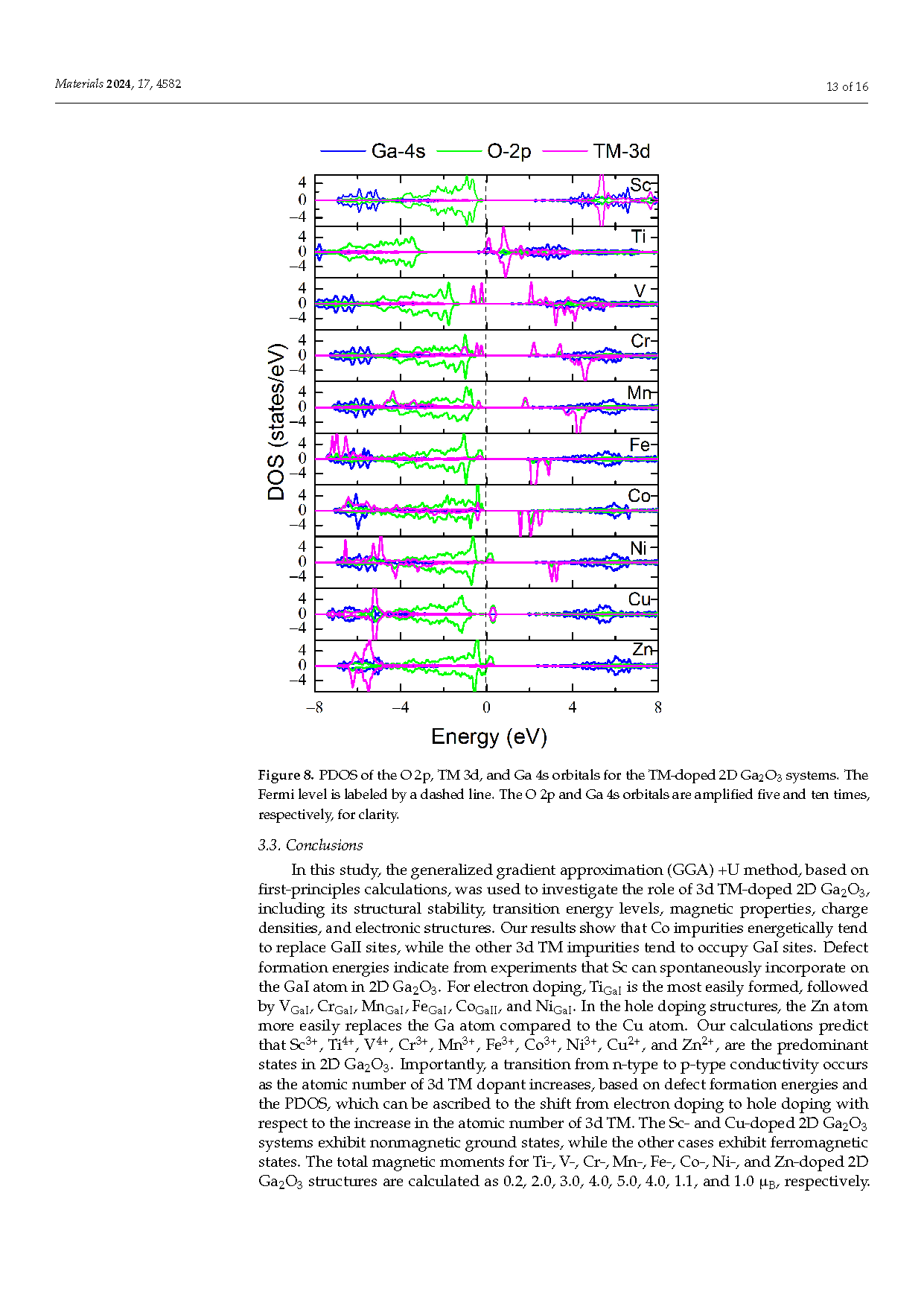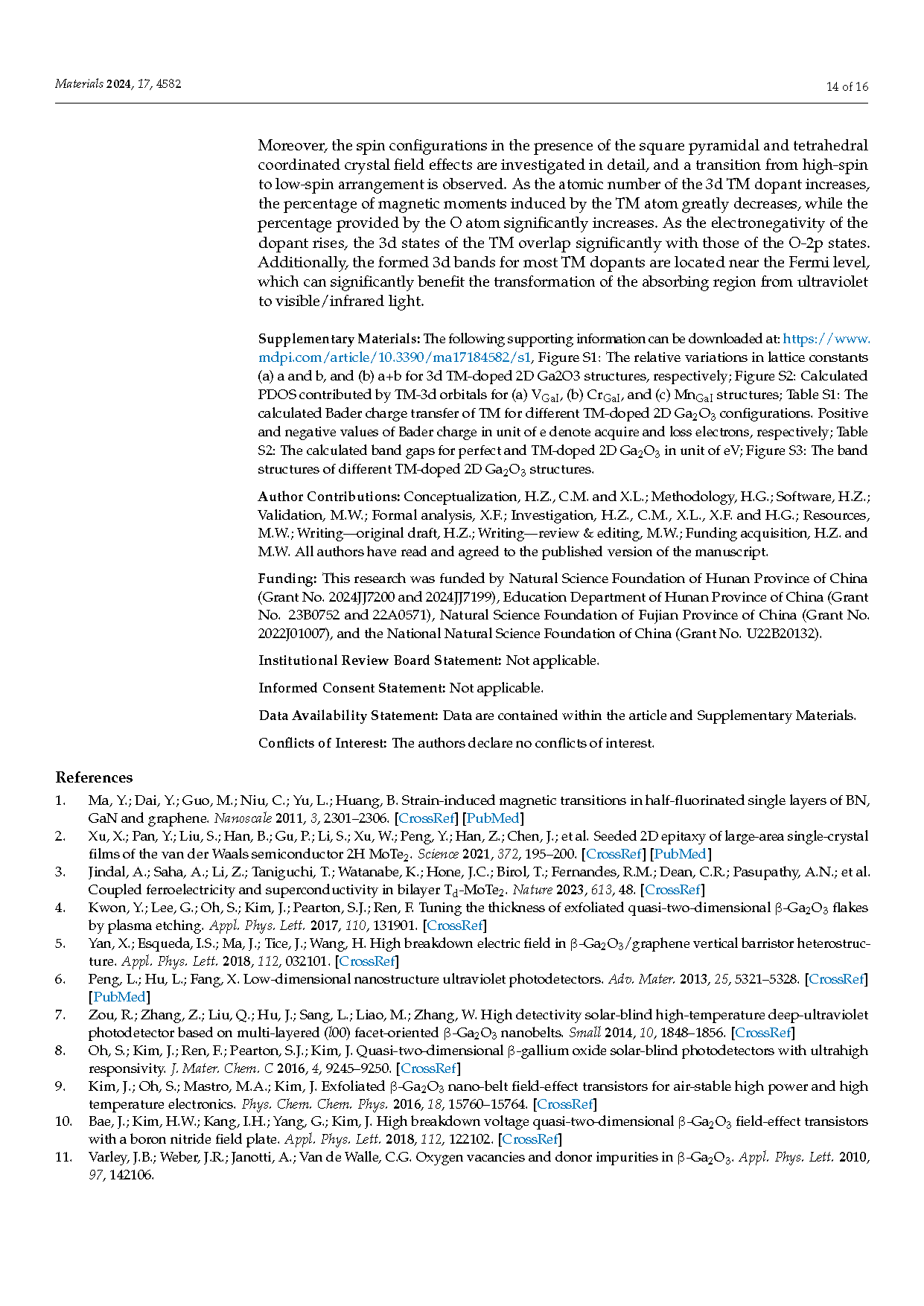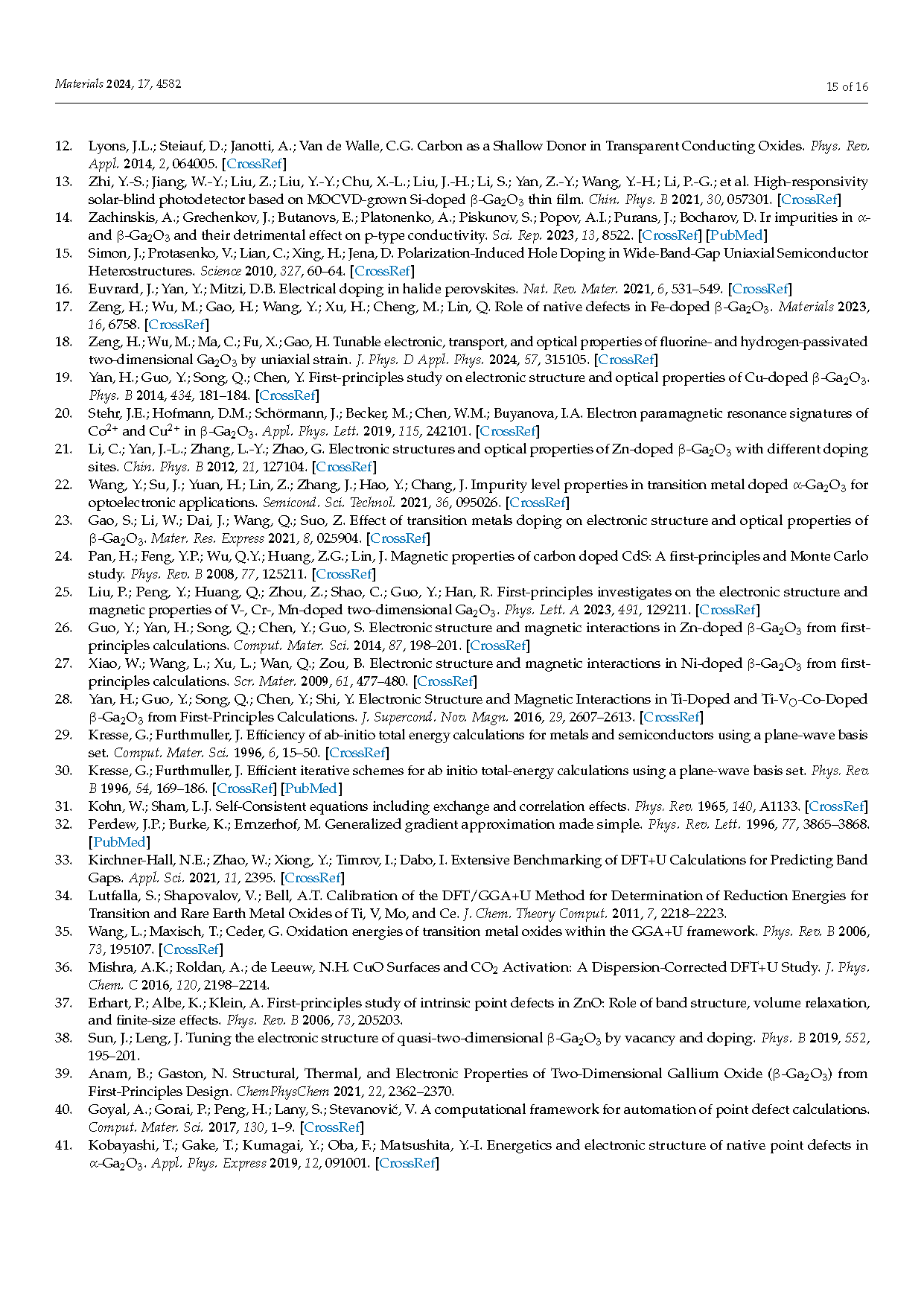
【Domestic Papers】Researchers from Hunan University of Science and Engineering Investigated the Role of 3d TM-Doped Two-Dimensional Ga₂O₃
日期:2024-11-29阅读:555
Researchers from the Hunan University of Science and Engineering have published a dissertation titled " Roles of Impurity Levels in 3d Transition Metal-Doped Two-Dimensional Ga2O3" in Materials.
Abstract
Doping engineering is crucial for both fundamental science and emerging applications. While transition metal (TM) dopants exhibit considerable advantages in the tuning of magnetism and conductivity in bulk Ga2O3, investigations on TM-doped two-dimensional (2D) Ga2O3 are scarce, both theoretically and experimentally. In this study, the detailed variations in impurity levels within 3d TM-doped 2D Ga2O3 systems have been explored via first-principles calculations using the generalized gradient approximation (GGA) +U method. Our results show that the Co impurity tends to incorporate on the tetrahedral GaII site, while the other dopants favor square pyramidal GaI sites in 2D Ga2O3. Moreover, Sc3+, Ti4+, V4+, Cr3+, Mn3+, Fe3+, Co3+, Ni3+, Cu2+, and Zn2+ are the energetically favorable charge states. Importantly, a transition from n-type to p-type conductivity occurs at the threshold Cu element as determined by the defect formation energies and partial density of states (PDOS), which can be ascribed to the shift from electron doping to hole doping with respect to the increase in the atomic number in the 3d TM group. Moreover, the spin configurations in the presence of the square pyramidal and tetrahedral coordinated crystal field effects are investigated in detail, and a transition from high-spin to low-spin arrangement is observed. As the atomic number of the 3d TM dopant increases, the percentage contribution of O ions to the total magnetic moment significantly increases due to the electronegativity effect. Additionally, the formed 3d bands for most TM dopants are located near the Fermi level, which can be of significant benefit to the transformation of the absorbing region from ultraviolet to visible/infrared light. Our results provide theoretical guidance for designing 2D Ga2O3 towards optoelectronic and spintronic applications.
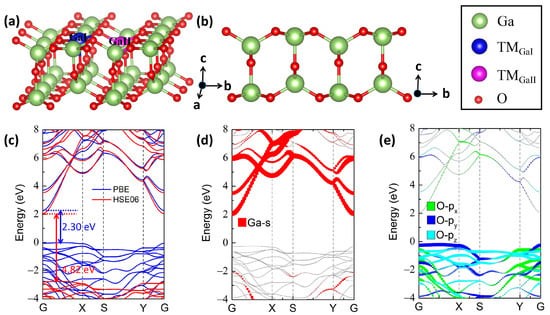
Figure 1. The structural model of 3d TM (Sc, Ti, V, Cr, Mn, Fe, Co, Ni, Cu, Zn)-doped 2D Ga2O3 structures from the (a) perspective view and (b) side view. The O and Ga atoms are represented by the smaller red and larger green spheres, respectively. The replaced GaI and GaII doping positions with a TM atom are indicated by the blue and magenta colors, respectively. (c) Band structure of perfect 2D Ga2O3 unit cell calculated by PBE and HSE06 functionals. Orbital-projected band structures of (d) Ga-4s orbitals and (e) O-2p orbitals for perfect 2D Ga2O3 unit cells under PBE functional. The high symmetry points are G (0, 0, 0), X (0.5, 0, 0), S (0.5, 0.5, 0), and Y (0, 0.5, 0), respectively.
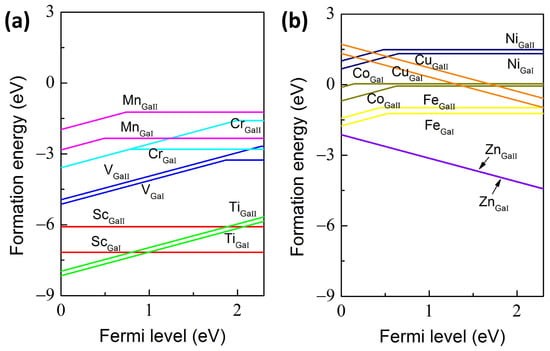
Figure 2. The calculated (a,b) defect formation energies for different TM-doped 2D Ga2O3 structures under O-rich conditions.
DOI:
https://doi.org/10.3390/ma17184582
